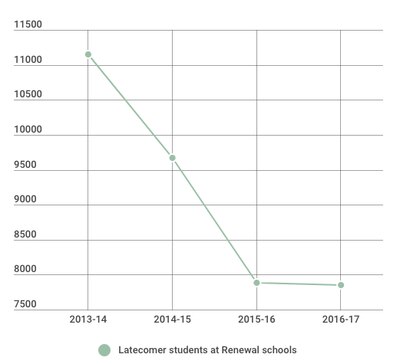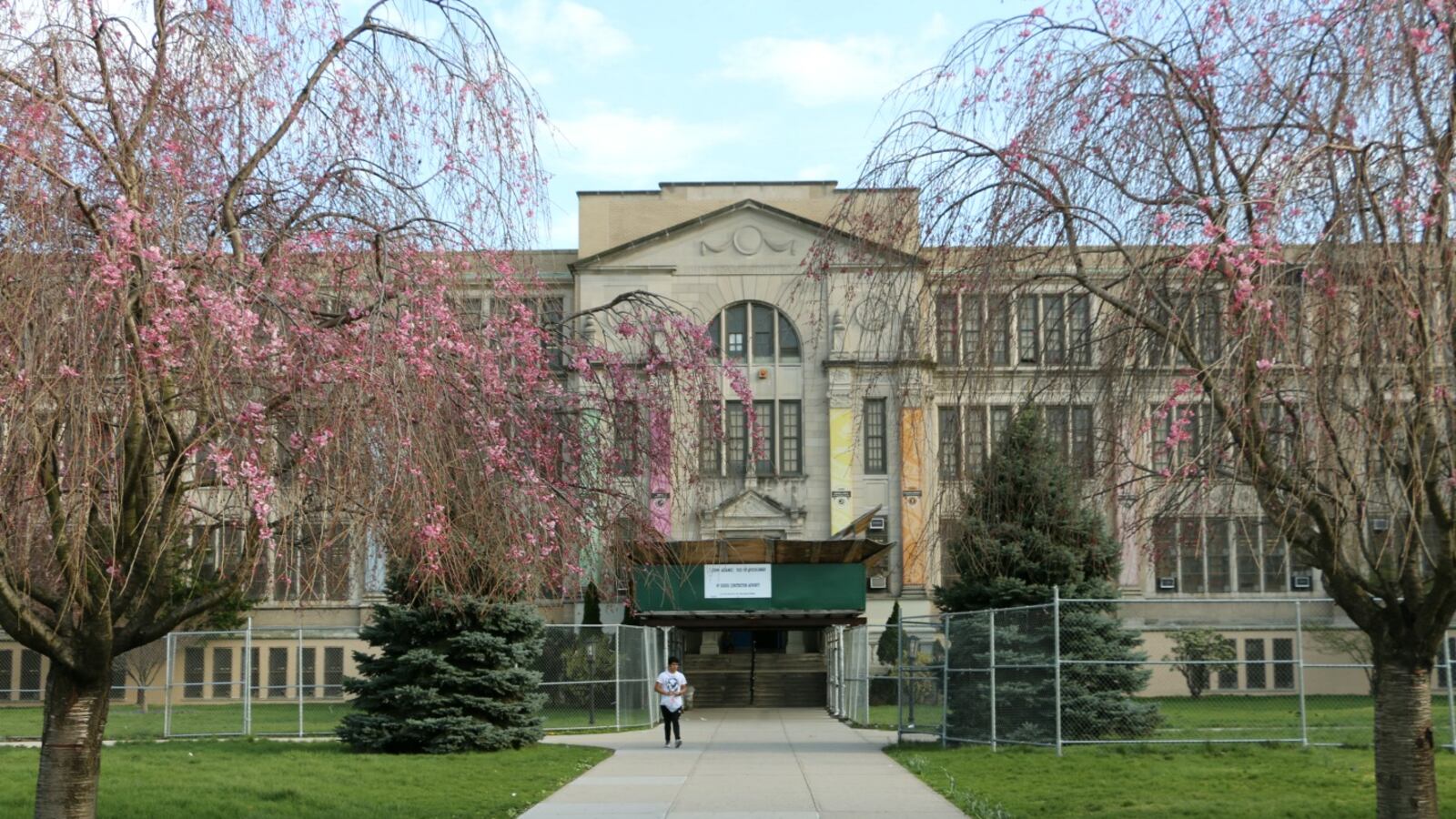New York City is sending significantly fewer latecomer students — typically among the most difficult to serve — to schools in its flagship turnaround program.
Over the past three years, the number of students sent to schools in the city’s Renewal program outside the normal admissions process has declined 19 percent, according to new data from the education department, outpacing a 10 percent decrease in schools citywide over the same period.
The reduction suggests that schools Chancellor Carmen Fariña has stuck to her promise to stem the tide of latecomer students — often newly arriving immigrants, students with special needs, and those who struggle with homelessness — to some of the city’s most struggling schools.
But it’s unclear if that policy change is making a significant difference on the ground.
For one thing, since Renewal schools have been losing students, the proportion of latecomer students has essentially gone unchanged. Even though the city has sent a smaller number of latecomer students to these schools, roughly one in five students at Renewal schools were over-the-counter last year, just slightly less than three years ago.
“It’s a good start,” said Norm Fruchter, a researcher at New York University who authored a report that found the city disproportionately sends those students to low-performing high schools. But “one out of every five is a tough challenge for schools that are already challenged,” Fruchter added. “I would have hoped for a reduction in the percentage.”
Every year, thousands of students enter city schools outside the normal admissions process, students who are generally harder to serve and can disrupt school schedules mid-year. But since New York City’s middle and high school admissions process is largely based on a choice process, less desirable and lower-performing schools tend to have more open seats for latecomers.
When the city designated an original 94 Renewal schools as low performing enough to merit an influx of extra resources, some school staffers wondered how they were supposed to stoke “fast and intense” improvements while the city continued to send them high-need students mid-year. That’s partly why Fariña announced two years ago those schools would receive fewer latecomers.

But sending fewer students to struggling schools can also create problems, and has sparked concern among some school leaders. Most Renewal schools have been shedding students for years, so limiting the number of latecomers may contribute to enrollment problems that can result in less funding or potentially even closure.
At Harlem’s Coalition School for Social Change, for instance, enrollment has dropped 44 percent over the past three years, a main reason principal Geralda Valcin is planning to ask the city to send more students over the counter — not fewer.
“Will it be harder with these kids coming on board? Absolutely,” Valcin said. “But with less kids I get less money” for teachers.
Education department officials emphasized that they work individually with schools, superintendents and families to find appropriate placements for latecomers, and said that enrollment declines at Renewal schools have started to level off.
“We’ve worked to support steady turnaround at Renewal schools by helping schools balance the need to grow enrollment with their ability to serve [over-the-counter] students,” Michael Aciman, a department spokesman, wrote in an email. He added that as Renewal schools see improvements, it might make sense to send them more latecomers.
Figuring out how to equitably place latecomer students has been a consistent challenge across administrations. Under Mayor Bloomberg, the city often clustered students who arrived mid-year at struggling schools and those the city was in the process of closing. Some of those problems have not completely gone away: As Chalkbeat reported earlier this year, the city sent some latecomer students to Renewal schools it planned to close, and Renewal schools still enroll more latecomers than the 15 percent city average.
The statistics education officials provided for this story does not include school-level breakdowns, making it difficult to tell if the city is still clustering lots of latecomers at certain Renewal schools, or whether struggling schools outside the Renewal program have received fewer latecomers.
City officials did not respond to a question about whether they see the current distribution of late-arriving students as a problem. But at least one Renewal school leader said it’s important for the city to pay attention to how those students are distributed system-wide — not just whether one segment of struggling schools are seeing fewer of them.
“I think all schools should be receiving students over the counter in equal and fair ways,” said one Renewal school leader. “Renewal schools should not be treated differently than others.”

